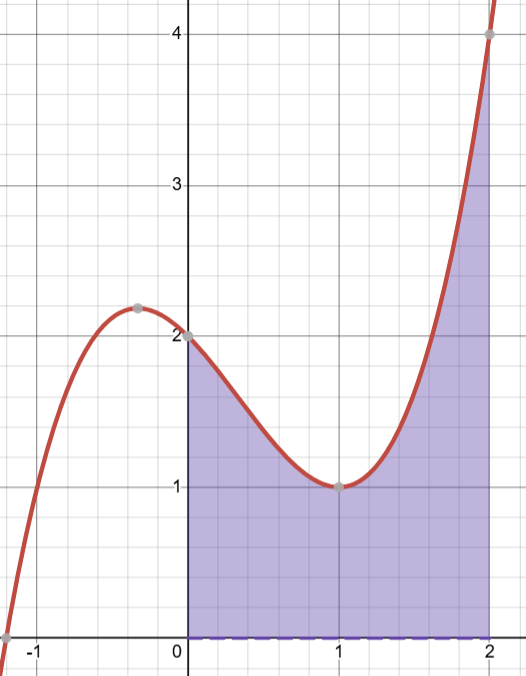Master Calculus! Get instant help on “I Aced Calculus AP” App. Hundreds of flashcards and practice questions at your fingertips. Download now on the App Store and Google Play.

8 Nov 2024
The concept of an integral is a fundamental part of calculus and mathematical analysis, allowing us to measure quantities that accumulate over time or space. Integrals are used extensively in physics, engineering, economics, and many other fields to calculate areas, volumes, and total values of quantities. In this article, we’ll cover the basic definition of an integral, what it represents, and some intuitive examples.
An integral is a mathematical concept that represents the accumulation or summing of infinitely small quantities over an interval. The integral is often denoted by the symbol \( \int \), followed by a function, and is usually accompanied by limits of integration to specify the range of accumulation.
There are two main types of integrals:
1. Definite Integral: Represents the total accumulation over a specific interval, from \( a \) to \( b \). It is denoted by:
\[\begin{align*} \int_a^b f(x) \, dx \end{align*}\]
where \( f(x) \) is the function being integrated (called the integrand), and \( a \) and \( b \) are the limits of integration. The result of a definite integral is a single number, which often represents an area under the curve of \( f(x) \) from \( x = a \) to \( x = b \).
2. Indefinite Integral: Represents a family of functions and gives the general form of all possible antiderivatives of \( f(x) \). It is denoted by:
\[\begin{align*} \int f(x) \, dx \end{align*}\]
The result of an indefinite integral is a function plus a constant \( C \), which accounts for all possible vertical shifts of the antiderivative of \( f(x) \).
To better understand integrals, imagine you want to find the area under a curve defined by a function \( f(x) \) over an interval \( [a, b] \). We can approximate this area by dividing it into small rectangles and summing up their areas. This process is called a Riemann Sum. As we make the rectangles thinner (infinitesimally small), the sum of their areas approaches the true area under the curve. This limit is the integral of \( f(x) \) from \( a \) to \( b \). As an example, here is $f(x) = x^3 – x^2 – x + 2$ from $0$ to $2$.

In other words, an integral can be thought of as the sum of an infinite number of small quantities that make up the area under a curve, the total distance traveled, or any accumulated quantity.
An integral expression typically has three main components:
– \( f(x) \): The function to be integrated, called the integrand.
– \( dx \): The differential, which indicates the variable of integration and represents an infinitely small piece of the input variable.
– \( a \) and \( b \): For a definite integral, these are the limits of integration, representing the interval over which the function is being integrated.
For example, the definite integral \(\displaystyle \int_0^3 (2x + 1) \, dx \) represents the area under the curve of \( f(x) = 2x + 1 \) from \( x = 0 \) to \( x = 3 \).
Integrals are used to solve various real-world problems where accumulation or total quantities are involved:
1. Area and Volume: Finding areas under curves and volumes of shapes are common applications of integrals in geometry and calculus.
2. Physics: Integrals are used to calculate total displacement, velocity, and acceleration over time.
3. Economics: In economics, integrals help calculate total cost, revenue, and profit over time.
4. Probability and Statistics: Integrals are used to determine probabilities and expected values in continuous probability distributions.
In summary, integrals are a powerful tool for understanding and calculating accumulated quantities over a range. Whether you’re calculating area, volume, or a total amount, integrals provide a systematic way to approach problems involving continuous accumulation. Mastering the concept of integrals opens the door to advanced applications in mathematics and beyond.